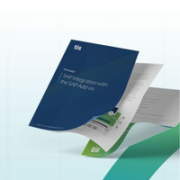Approaches to FX Volatility
13-07-2022 | treasuryXL | ComplexCountries | LinkedIn |
The latest CompleXCountries report is based on two Treasury Peer Calls in which senior treasurers from Asia, the Americas and Europe discussed the latest bout of increased FX volatility, and the impact it is having on their hedging strategies. As to current volatility, some people are adjusting their strategies, but most prefer to stick with the approach which has already been defined.

FX – one of the biggest and most important challenges we all face. It has a direct impact on the business, and everyone has a view.
The calls (European morning and afternoon to accommodate Asia and the Americas) were to discuss the latest bout of increased FX volatility, and the impact it is having on people’s hedging strategies – if any. Unsurprisingly, it turned into a long discussion of the way different companies approach hedging. The report below is long and very varied – we managed to reduce it to 20 pages, but they are dense. As to current volatility, some people are adjusting their strategies, but most prefer to stick with the approach which has already been defined.
What is that approach? The participants came from a variety of different industries, and covered a broad range of different ways of handling the issue.
- Everyone has a defined hedging approach, though most contain some degree of flexibility. So, if the approach is to hedge the next 6 months, for example, there may be leeway to go down to 4 months or up to 8.
- Most people add their hedges via a layering approach, where they build up the hedge over time. This provides an average hedge rate, and avoids the risk of choosing a single point in time.
- Everyone tries to match their hedges to the needs of the business. This involves co-ordinating with the business units to get their input on the ability to change prices, how long it takes to do so, etc.
- Most companies have a centralised approach to hedging, but there is variety as to whether central treasury acts as and advisor, or as a decision maker. In most cases, this is decided by the company’s internal measurements and incentive system.
- Several companies try to insulate the operating units from the effects of currency. This is done by various means: several participants operate re-invoicing centres, which invoice the operating entities in their own currencies, and manage the resulting exposures in the centre. One participant achieves the same result by levying a currency specific working capital charge on the operating units. The income from this charge is then used to pay for hedges – which may, or may not, actually be taken out.
- In these cases, the centre usually operates as a profit centre – but with strong risk management disciplines to contain the danger of positions getting out of control.
- One other approach is to fix a budget exchange rate for the coming year, and try to lock that in via hedges. There was a discussion as to whether this suits all businesses.
- Most participants use forwards for hedging, with the choice of deliverable or NDF varying from one country to another. Several use options, though cost and accounting complexity were obstacles.
- One participant has an approach which is built entirely around options, including a sophisticated trading strategy to reduce the cost of what they view simply as an insurance policy, like any other. This company is also very opportunistic, and will be active or inactive in the market according to their view of current pricing. This company is also private, and family owned, so they have a higher tolerance for earnings volatility than most – and they are not concerned about quarterly earnings announcements. They also have a relatively high margin business.
- In this company, as in all others, this strategy is only possible because it has the understanding and buy-in of the management and the operating units. Every participant mentioned this as being key for success.
- Generally, the percentage of hedging is fixed by policy. However, most participants exercise some judgement, based on the cost of hedging. This is particularly relevant for some emerging market countries, such as Brazil, Argentina and many African countries. The judgement as to what constitutes a hedge which is too expensive was often empirical, but the currencies which were left unhedged usually did not represent a significant exposure for the company.
- Most participants prioritise balance sheet hedging over cash flow hedging, but some take the opposite approach. In all cases, the accounting treatment is a significant factor in determining the approach.
Bottom line: hedging and managing currency is one of the key competences of the treasurer. For many years to come, it will continue to be one of the areas where there is the biggest variation in approaches – and endless debates. If you have an approach which is well defined and which has been fully discussed with the business, there should not be any need to change it during a period of volatility – though it can be an excellent stress test!
Contributors:
[The full report can be downloaded FREE by corporate treasury practitioners, please Log in to your account to download (if you receive emails from us – use your email address to retrieve your password), if setting up a new account, please ask for the FX report in the comments and ComplexCountries will send you a copy]
Please contact ComplexCountries to find out about their subscription packages.










